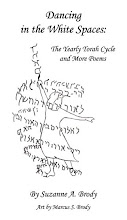Friday, November 30, 2007
Tuesday, November 27, 2007

Cash Advance Loans
What makes a genius? I think it's the use of non-English words. Not the definition I would pick on my own.
Wednesday, November 21, 2007
Dvar Torah Vayetze 2007
In memory of Joel Shickman
I want to tell you a story that should sound pretty familiar.
There was a woman who was loved by her husband. But, her husband had another wife, and the other wife had already given birth to multiple children, while the beloved wife was infertile. The second wife (the less loved one) taunted the barren wife, who was in so much distress over her situation that she cried out in pain. She also tried at least one potential remedy for infertility. Eventually, the beloved barren wife managed to give birth to multiple children.
Whose story is this?
It’s actually the story of two different women in Tanach. We read one version of this story today, but we read a different version of this story on the first day of Rosh Hashanah. How is that possible since we don’t talk about either Rachel or Leah on Rosh Hashanah? Today, we read Rachel’s version, and on Rosh Hashanah we read Hannah’s version.
The idea that stories (or laws) are repeated in Tanach is not a new one. We all know about the two different creation stories, or about the two versions of the 10 commandments (one in Shmot and one in Dvarim). We are even familiar with the fact that there are two different accounts of Moses getting water for the people from rocks in the desert (once where he talks to the rock, and once where he strikes it). Parallel stories between Torah and Prophets or Writings are not common. Yet, I can give you four such pairs. And each of these pairs centers around the same issue – a woman’s struggle with fertility, or more accurately, lack thereof.
Now I know that you’re all sitting there trying to see if you can figure out all 8 women and match them into pairs. Feel free to challenge others at your Shabbos tables to think about it, too. Each of the four matriarchs is paired with a woman whose story we read as a haftorah, though they are not actually read together on the same day. Sarah’s story is paralleled by Samson’s mother / Aishet Manoach. Rivka’s story is paralleled by the Shunamite woman. Leah’s story is mirrored by Michal’s. And Rachel’s story is paralleled by Hannah’s.
What do we gain by placing the stories side by side like this? Both the similarities and the differences now jump out at us, and from these similarities and differences, we are able to learn a lot about the human condition and the interactions between us and G-d.
It is not a coincidence that all four foremothers and four other prominent females in a tradition with a paucity of female voices should suffer from infertility. Issues of fertility and survival are central to any group, whether one speaks in biological or ideological terms. On an individual level, modern research estimates that approximately 6 million Americans face fertility problems; that's roughly one of every six couples, or 10 percent of the reproductive-age population. The Torah gives us spiritual tools to address this silent crisis in our midst.
When one mentions either infertility or motherhood in the Tanach, often the first names that come to mind are Hannah and Rachel. Both of these women are seen as quintessential examples of infertile women becoming paradigms for motherhood. As evidenced by the story that I told you in the beginning, there are many elements of overlap between the stories of Hannah and Rachel (this is what makes them parallel stories). The overlapping theme that they share in distinction to the other stories of infertility in the Tanach are the aspects of longing and prayer. Hannah, after all, is our model of prayer. She calls out to G-d with all of her heart and soul in her quest to have a child. (1 Samuel 1:10) וְהִיא, מָרַת נָפֶשׁ; וַתִּתְפַּלֵּל עַל-ה', וּבָכֹה תִבְכֶּה. “And she was bitter of soul, and prayed to G-d, and surely cried”. Yet, we do not even know the words that she used. Her prayer was so personal that it was between her and G-d alone. Rachel expresses that same desperation for a child in a slightly different form, in words whose meaning has long been debated: (Genesis 30:1) הָבָה-לִּי בָנִים, וְאִם-אַיִן מֵתָה אָנֹכִי. “Give me children and if not, I will die”.
I think that both Hannah’s silent prayer and Rachel’s anguished outburst express the same pain and desperation of a person desperately seeking something that seems beyond her grasp. (Like any woman who seeks fertility treatments, Rachel and Hannah simply longed for children of their own to hold and love.) From these courageous women who share a common story, we learn that when we cry out to G-d, our prayers are heard. This message is so important, it needs to appear twice in Tanach, lest we think that it was just a fluke that G-d answered a prayer. Rather, all heart-felt powers have the potential of reaching G-d.
May our prayers, like those of Rachel and Hannah, merit the blessing of being heard by G-d.
Shabbat shalom.
